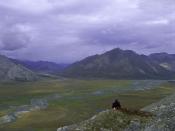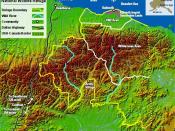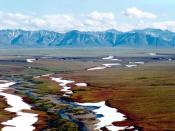Introduction.
The Arctic National Wildlife Refuge was established in 1960 and was further expanded in 1980. The Arctic Refuge is a wildlife reservation that expands over 20 million acres of land. It is also the home to many different types of species. Its preservation ensures the lives of these animals, and the betterment of their population. The Arctic Refuge lies north of the Arctic Circle, and is an intact continuum of six different ecological zones covering some 200 miles from north to south. It has been said that the Arctic Refuge is the greatest outstanding reminder that saving and conserving nature is a great American value that should be kept. Although the wildlife refuge is preserved for the animals, and vast ecosystems, there is a current issue of whether drilling for oil should be allowed. The National Wildlife Refuge is a place of peace, and should not be disturbed by the drilling for oil, because there are other fuel sources other than oil.
Discussion.
The wildlife refuge has a wide variety of ecosystems. They include coastal plains, rivers, snow-capped mountains, and all other arctic and sub arctic ecosystems. These ecosystems includes thirty-six species of fish, thirty-six land mammals, nine marine mammals, and more than 160 birds who migrate and live on the Arctic Refuge. The heart of the refuge is its coastal plains, because it provides the most important birthing and nursing ground for
arctic wildlife. The coastal plains alone are the home for nearly 200 wildlife species, including polar bears, musk oxen and caribou. Every summer, millions of tundra swans, snowy owls, eider ducks and other birds migrate there to nest, molt and feed. One of the mammals that live on the coastal plains is the shaggy musk ox. The musk ox is one of the animals on the...


